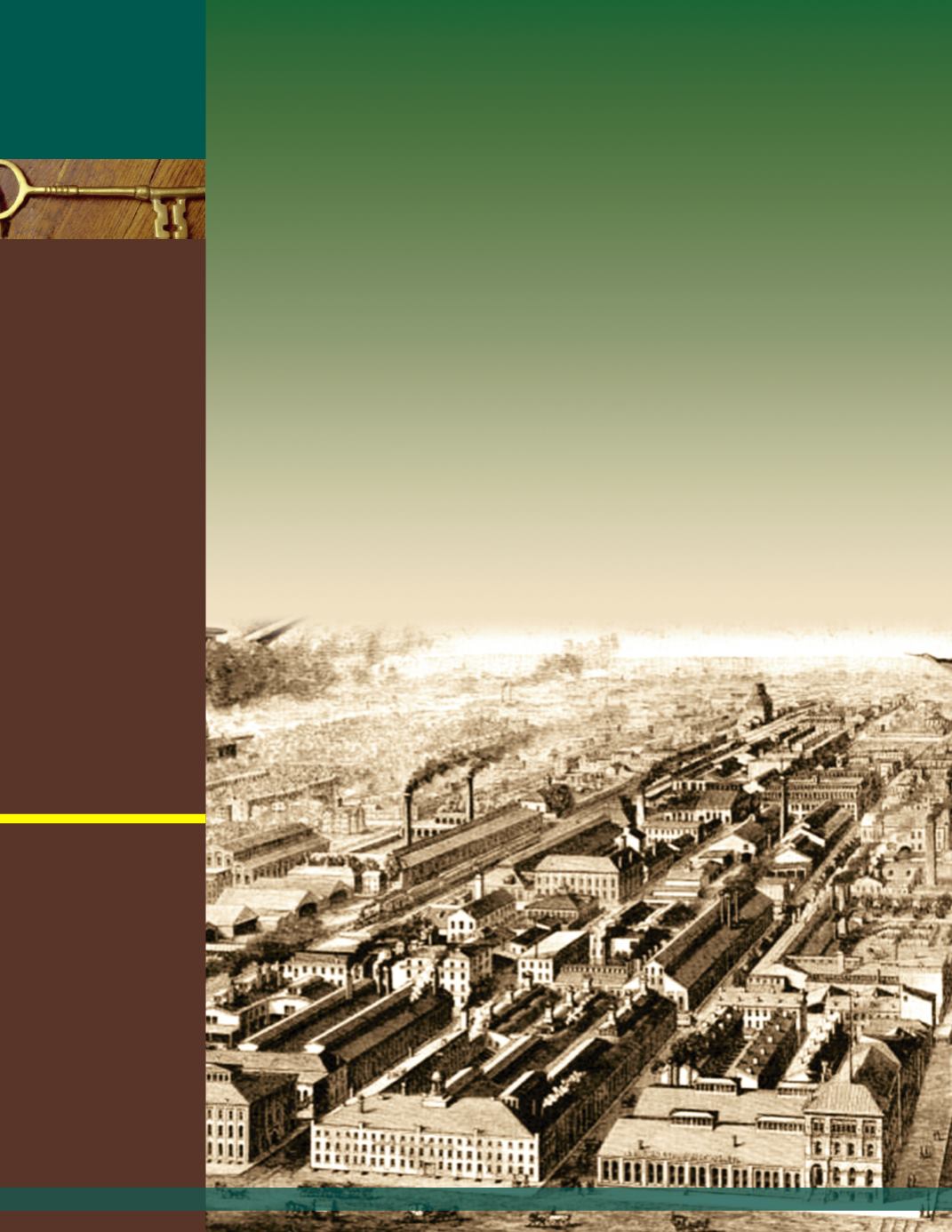
LESSON
18
KEY
WORDS
economics
demand
supply
profit
price
capitalistic
competitivemarket
monopolistic market
scarcity
loss
innovation
craftsmen
merchants
agricultural
T
HE
E
CONOMICS OF THE
I
NDUSTRIAL
R
EVOLUTION
An Industrial Nation Emerges froma CostlyWar
Pennsylvania, and our country, rapidly industrialized throughout the 19th century. By
the early 1800s, canals and highways connectedmuch of the eastern United States,
allowing the transportation of finished products and rawmaterials. Water poweredmost
of our manufacturing facilities, replacing the horse-drawn production used in our earliest
factories. (The termhorsepower, in fact, comes from the original measure of a horse’s
power in production.) But at this time, much of our rawmaterial, such as cotton for
textiles, was located in the South, while Northeastern States dominatedmanufacturing
with their fast-moving rivers to power production facilities.
Leading up to the American Civil War (1861-1865), steampower was becoming an
efficient alternative to water power, allowingmanufacturing to happen anywhere. All of
the ingredients were in place to begin our Industrial Revolution. This growing
industrialization helped support the war effort for both the Union and the Confederacy.
And the new nation that emerged from this costly war needed to be rebuilt. This perfect
stormof factors was in place in Pennsylvania, and our nation, for the industrial explosion
that was about to come.
F
OCUS
Q
UESTIONS
1. How does our economic systemwork?
2. How did the Industrial Revolution change the way people earned a living?
Baldwin Locomotive
Works was started
in Philadelphia in
1825 byMatthias
Baldwin. Eventually
his assembly plant
would covermore
than 196 acres.
Baldwin’s engines
were superior to
others built
anywhere in the
world. By the time
of Baldwin’s death
in 1866, the
company had built
1,500 locomotives.
82
Understanding Pennsylvania


